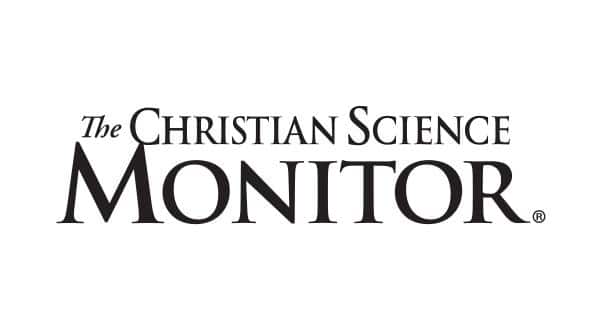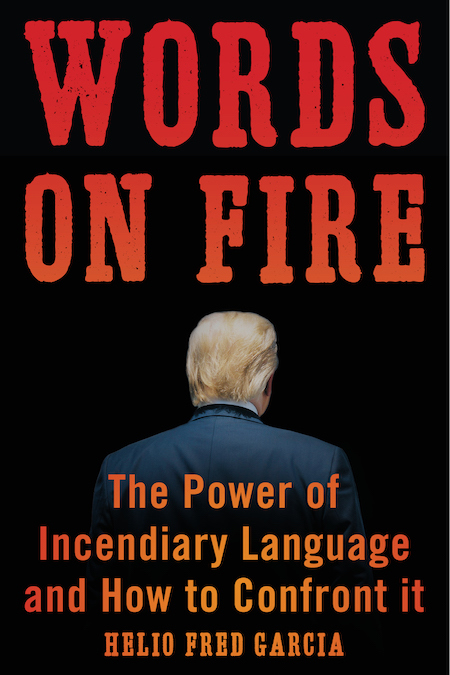This is an excerpt from a guest column by Helio Fred Garcia, originally published on Commpro.biz on January 18, 2021.

National Archives, Public Domain
Today we commemorate the life and work of Rev. Dr. Martin Luther King, Jr.
On this day it is important to note that the man who for two more days is the sitting president has spent nearly a decade systematically attacking the very dream Dr. King described in his 1963 Lincoln Memorial Speech.
Donald Trump’s campaign and presidency were themed to evoke an America before the civil rights wins that began to dismantle some of the worst abuses of the Jim Crow era. And it happened right before our eyes, as Trump embraced white supremacist policies and normalized white nationalism.
And twelve days ago, on the Elipse just a mile from the Lincoln Memorial, Trump inspired a crowd filled with white supremacists to invade the U.S. Capitol, where some hoped to assassinate the Vice President and Speaker of the House.
That evening, after watching the Capitol assault on television, Trump told the attackers, “We love you. You’re very special.”
Dancing with White Supremacists
In my latest book, Words on Fire: The Power of Incendiary Language and How to Confront It, I track what I call Trump’s dance with white supremacists. Throughout his campaign and presidency, Trump has followed a recognizable pattern: He signals to white supremacists, and they signal back. Andrew Anglin, editor of the neo-Nazi website The Daily Stormer, has frequently referred to it as a “wink-wink-wink” relationship.
It began nearly ten years ago, when private citizen Trump addressed the 2011 Conservative Political Action Conference (CPAC) and declared he would run in 2012 to unseat President Barack Obama. He revived the long-discredited birther conspiracy that Obama was secretly Kenyan and Muslim. This got the attention of white supremacists. He continued pounding the birther theme for six years, straight through to the last month of his 2016 campaign.
White supremacists perked up even more in his 2015 campaign launch when Trump declared that Mexicans are rapists, when he called for a wall on the southern border, and when he later promoted a total and complete ban of Muslims entering the United States.
In early 2016 Former Klan leader David Duke endorsed Trump and urged his followers to volunteer for his campaign. He said, “Voting against Donald Trump at this point is really treason to your heritage.”
In late August 2016, Trump named Breitbart News co-founder Stephen Bannon to lead the Trump campaign. Bannon had previously said that Breitbart was the “platform for the alt-right.” The phrase “alt-right” was coined in 2010 by Richard Spencer, a prominent white nationalist who later was one of the Charlottesville organizers, as a less menacing phrase for white nationalism. After the election Trump named Bannon his senior White House strategist. In this way, the alt-right had a direct channel into the White House.
God Emperor of White Supremacists
On the day Trump was declared president, white supremacists celebrated and took credit for putting him in office.
The Daily Stormer wrote:
“We won, brothers. All of our work. It has paid off. Our Glorious Leader has ascended to God Emperor. Make no mistake about it: we did this. If it were not for us, it wouldn’t have been possible… And the great news is, we’re going to be given credit for it.”
David Duke tweeted:
“This is one of the most exciting nights of my life -> make no mistake about it, our people have played a HUGE role in electing Trump! #MAGA”
Richard Spencer tweeted:
“For the first time in my adult life, I am really proud of my country because it feels like hope is finally making a comeback. #Trump.”
Making Whiteness Great Again
Ten days after the election, in an auditorium of the Ronald Reagan Office Building several blocks from the White House, Spencer addressed the white nationalist group he ran. He said,
“We willed Donald Trump into office. We made this dream our reality. . . And this Trumpian dream is only the beginning . . . We demand to live in the world that we imagine… For us it is conquer or die. This is a unique burden for the white man, that our fate is entirely in our hands… That is the great struggle we are called to. We are not meant to live in shame and weakness and disgrace. We were not meant to beg for moral validation from some of the most despicable creatures to ever populate the planet. We were meant to overcome—overcome all of it. Because that is natural and normal for us. Because for us, as Europeans, it is only normal again when we are great again.”
Spencer closed his speech with a rousing call,
“Hail Trump! Hail our people! Hail victory.”
Spencer raised a glass up high with his right hand, in an apparent toast. Members of the audience rose and gave a Nazi salute extending their right arm out to the front. One man gave the salute multiple times, shouting “Sieg Heil!” – literally, “Hail Victory” in German.
In August of Trump’s first year Richard Spencer, David Duke, and other white supremacist leaders organized the “Unite the Right” rally in Charlottesville.
Trump and others insisted that the Charlottesville protest was about the removal of a statue of General Robert E. Lee. But it was much more.
On its website, The Daily Stormer admitted that the Charlottesville protest was not simply about a statue:
“Although the rally was initially planned in support of the Lee Monument, which the Jew Mayor and his Negroid Deputy have marked for destruction, it has become something much bigger than that. It is now an historic rally, which will serve as a rallying point and battle cry for the rising alt-right movement.”
One of the organizers, Michael Hill, president of the white nationalist group League of the South, tweeted to his followers:
“If you want to defend the South and Western civilization from the Jew and his dark-skinned allies, be at Charlottesville on 12 August.”
The Daily Stormer posted on its Facebook page:
“Next stop: Charlottesville, VA. Final stop: Auschwitz.”
“Battle cry” is not a casual reference. The Daily Stormer live-posted during the protest, including this:
“THIS IS THE BEGINNING OF A WAR! WE HAVE AN ARMY”
After counter-protester Heather Heyer was killed by a neo-Nazi, President Trump said that there was hatred and bigotry on many sides. The Daily Stormer wrote:
“Trump comments were good. He didn’t attack us. He just said the nation should come together. Nothing specific against us. He said that we need to study why people are so angry, and implied that there was hate… on both sides! So he implied the antifa are haters. There was virtually no counter-signaling of us at all. He said he loves us all. Also refused to answer a question about White Nationalists supporting him. No condemnation at all. When asked to condemn, he just walked out of the room.”
Two days later President Trump said there were “very fine people, on both sides,” David Duke tweeted a thank-you to the President.
Daryl Johnson, former domestic terrorism expert at the U.S. Department of Homeland Security, wrote a Washington Post column in which he noted the alignment of the white supremacist agenda and Trump’s policies and priorities:
“Neo-Nazis, Ku Klux Klan members, militia extremists, and other radical right-wing zealots march side-by-side at pro-Trump rallies across the country. Trump’s endorsement of the border wall, the travel ban, mass deportations of illegal immigrants — these ideas were touted on white supremacist message boards merely 10 years ago. Now they’re being put forth as official U.S. policy. Such controversial plans have placated white supremacists and anti-government extremists and will draw still more sympathetic individuals toward these extremist causes along with the sort of violent acts that too often follow, like Charlottesville.”
Fifteen days before the 2018 midterm elections, President Trump declared himself to be a nationalist. He addressed a rally crowd and said,
“You know, they have a word, it sort of became old fashioned. It’s called a nationalist. And I say, really, we’re not supposed to use that word. You know what I am, I’m a nationalist, OK. I’m a nationalist. Nationalist! Use that word!”
The following year, when Trump called for four congresswomen of color to “go back to where you came from,” The Daily Stormer wrote,
“This is the kind of WHITE NATIONALISM we elected him for.”
The Final Days

Capitol police in the House chamber protecting members of Congress.
In Trump’s final days in office the twice-impeached president has said he will not attend the inauguration, which Twitter interpreted as,
“[E]ncouragement to those potentially considering violent acts that the Inauguration would be a ‘safe’ target, as he will not be attending.”
And now Trump has an army: groups of white supremacists – Proud Boys, Boogaloo movement, QAnon, and others – who are mobilizing to replicate what happened on January 6. The FBI is warning about possible violent armed attacks on the January 20 inauguration and on symbolic targets in all 50 states.

The Lincoln Memorial is locked down, as is the National Mall up to the Capitol, protected by fences, razor wire, and more than 25,000 national guard troops in full combat gear including automatic weapons.
The Dream, Deferred
Dr. King’s dream was that we would judge people by the content of their character.
At the end of the Trump presidency, we see that he fails the character test. The tone is set from the top. Trump has spent a decade trying to dismantle Rev. Dr. Martin Luther King’s legacy. In his celebration of white supremacists and glorification of violence, he is the very antithesis of Dr. King.




 On January 7, 2021, Logos President and author of “Words on Fire: The Power of Incendiary Language and How to Confront It,” Helio Fred Garcia was quoted in an article in Christian Science Monitor on his personal response to the storming of the U.S. Capitol by insurrectionists on January 6. In the article, people from across the country react to the insurrectionists attack and reflect on what this means.
On January 7, 2021, Logos President and author of “Words on Fire: The Power of Incendiary Language and How to Confront It,” Helio Fred Garcia was quoted in an article in Christian Science Monitor on his personal response to the storming of the U.S. Capitol by insurrectionists on January 6. In the article, people from across the country react to the insurrectionists attack and reflect on what this means. On the night of January 6, 2021, Helio Fred Garcia was quoted from his book,
On the night of January 6, 2021, Helio Fred Garcia was quoted from his book,  It was a year that changed everything: what it means to be “at work” or “at school”; how we visit the doctor; how we greet each other; how we shop for groceries and other goods; how we say goodbye to loved ones as they take their final breath.
It was a year that changed everything: what it means to be “at work” or “at school”; how we visit the doctor; how we greet each other; how we shop for groceries and other goods; how we say goodbye to loved ones as they take their final breath.